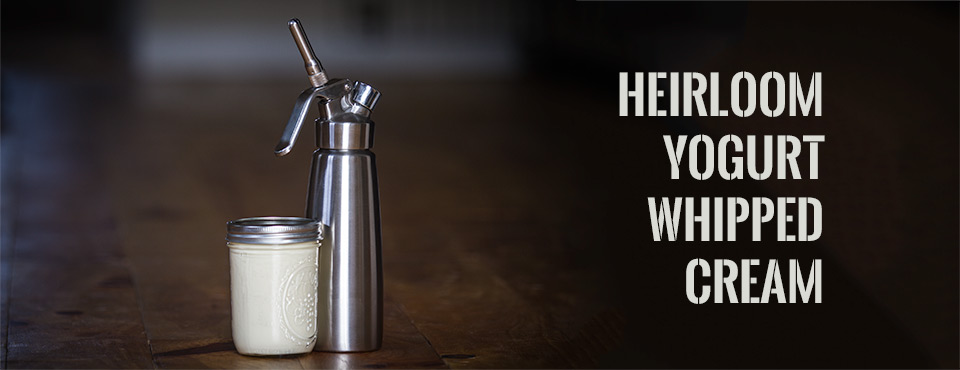If you’re lactose intolerant, fermenting your whipped cream can mean the difference between enjoyment and regret. Let the microbes in this heirloom yogurt digest the lactose for you so you don’t have to.
You can save a lot of money (or spend way more on whipping cream that you never use to eat) and use higher quality ingredients by investing in a whipped cream maker. When it comes to ingredients, even if you’re not lactose intolerant, fermenting heavy whipping cream before putting it into a whipped cream canister makes for an enjoyable fermented treat.
Why you should try fermenting whipped cream
I’m not sure if anyone is marketing “probiotic” whipped cream yet, but after experimenting with it myself, I’m sold. I’m unable to eat whipped cream without this little fermentation trick because I am lactose intolerant. Like many of the wonders of fermented foods, I am able to consume as many dairy products as I desire as long as they are fermented first.
But this is not only for those of us that are lactose intolerant. The mild tartness in fermented whipped cream brings out a complexity that I find lacking in the average whipped cream. Plus, in my experience, it also extends the shelf-life of the finished product.
Isn't this just whipped Créme fraîche?
Yes and no. In the strictest since, we are not using the proper créme fraîche bacterial culture (or raw milk) for this to be a true whipped créme fraîche. Many times créme fraîche recipes also call for rennet and a cheesecloth straining period to remove extra whey. But to be fair, there are a number of créme fraîche recipes on the internet that also suggest using buttermilk, sour cream or yogurt as the starter culture.
So yes, you could call this whipped créme fraîche as long as you are not adding sweetener and vanilla. But I’ll go for a purest naming convention and instead of calling this créme fraîche, I’ll refer to it in this post as yogurt whipped cream, or fermented whipped cream.
Why heirloom yogurt?
If you’re not already familiar with heirloom yogurts, then read more in The Heirloom Yogurt Showdown.
The two main reasons why I am using heirloom yogurt, and specifically, Matsoni (a.k.a. Capsian Sea) yogurt, are taste and ease of preparation. I like using Matsoni yogurt because it adds a slight nut and vanilla taste. It also ferments at room temperature so there is no need to heat the heavy whipping cream.
I have also used store-bought plain yogurt as a starter and have incubated the heavy whipping cream. There are a few more steps involved and the finished result is more tart. I liked the tartness, but some others that I served it to could not get used to their whipped cream being both sweet and that tart.
How to make fermented whipped cream
I used Matsoni yogurt as a starter but you could just as easily use a different heirloom countertop yogurt such as Piima, Viili or Filmjölk for a different flavor profile. If you don’t have heirloom yogurts available, you could also use sour cream or buttermilk as long as the label reads “live active cultures.”
Add one tablespoon (15 ml) Matsoni yogurt to 16 ounces (500 ml) of heavy whipping cream in a mason jar. Put on the lid and shake to mix. Leave set to ferment for 12 hours in an area that is roughly 70-78°F (21-26°C).
I have found that different brands of heavy whipping cream have different levels of thickness after fermenting. Given that you are using heavy whipping cream, you may not notice much difference in thickness before and after fermentation. However, when I used a nice organic heavy whipping cream, the results were so thick that I had to spoon the fermented cream into the whipped cream maker. It was much more like a thick créme fraîche, so sometimes I won’t even whip it but instead enjoy it as is.
Once thick, place in refrigerator and place your metal whipped cream maker in the freezer until both are chilled. Then pour, or spoon, the matsoni heavy whipping cream yogurt into your whipped cream maker. Add 2 tablespoons (15 grams) powdered sugar and a few drops of vanilla extract before closing the lid. Insert a nitrous-oxide charger as you would for a normal batch of whipped cream.
Charge, shake and serve some fermented goodness.


 Listen Now
Listen Now 
